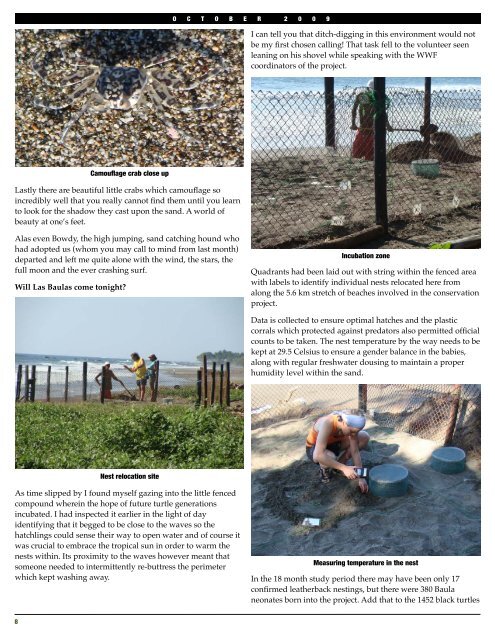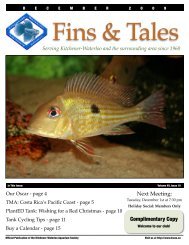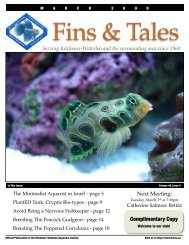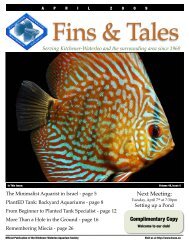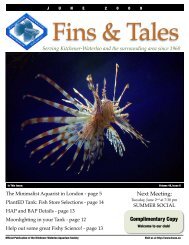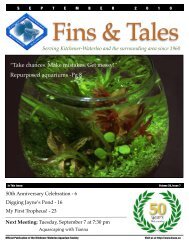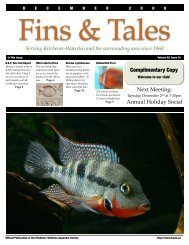October 2009 - Kitchener Waterloo Aquarium Society
October 2009 - Kitchener Waterloo Aquarium Society
October 2009 - Kitchener Waterloo Aquarium Society
Create successful ePaper yourself
Turn your PDF publications into a flip-book with our unique Google optimized e-Paper software.
O C T O B E R 2 0 0 9<br />
I can tell you that ditch-digging in this environment would not<br />
be my first chosen calling! That task fell to the volunteer seen<br />
leaning on his shovel while speaking with the WWF<br />
coordinators of the project.<br />
Camouflage crab close up<br />
Lastly there are beautiful little crabs which camouflage so<br />
incredibly well that you really cannot find them until you learn<br />
to look for the shadow they cast upon the sand. A world of<br />
beauty at one’s feet.<br />
Alas even Bowdy, the high jumping, sand catching hound who<br />
had adopted us (whom you may call to mind from last month)<br />
departed and left me quite alone with the wind, the stars, the<br />
full moon and the ever crashing surf.<br />
Will Las Baulas come tonight?<br />
Incubation zone<br />
Quadrants had been laid out with string within the fenced area<br />
with labels to identify individual nests relocated here from<br />
along the 5.6 km stretch of beaches involved in the conservation<br />
project.<br />
Data is collected to ensure optimal hatches and the plastic<br />
corrals which protected against predators also permitted official<br />
counts to be taken. The nest temperature by the way needs to be<br />
kept at 29.5 Celsius to ensure a gender balance in the babies,<br />
along with regular freshwater dousing to maintain a proper<br />
humidity level within the sand.<br />
Nest relocation site<br />
As time slipped by I found myself gazing into the little fenced<br />
compound wherein the hope of future turtle generations<br />
incubated. I had inspected it earlier in the light of day<br />
identifying that it begged to be close to the waves so the<br />
hatchlings could sense their way to open water and of course it<br />
was crucial to embrace the tropical sun in order to warm the<br />
nests within. Its proximity to the waves however meant that<br />
someone needed to intermittently re-buttress the perimeter<br />
which kept washing away.<br />
Measuring temperature in the nest<br />
In the 18 month study period there may have been only 17<br />
confirmed leatherback nestings, but there were 380 Baula<br />
neonates born into the project. Add that to the 1452 black turtles<br />
8


